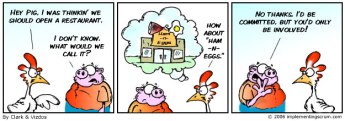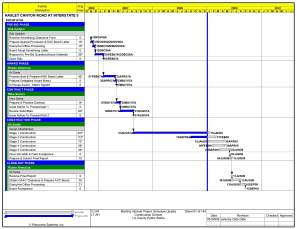
The daily scrum is one of the 4 ceremonies or meetings that are crucial for Scrum. The main aim of the daily scrum is: will we meet the sprint goal? But always answering the same 3 questions (What did you do yesterday? What are you going to do today? Do you have any impediments?) might be boring after a while and people will not be so enthusiastic anymore, arrive too late or do not show up anymore. This will has an impact on the whole team. If the team finds the daily scrum boring an pointless, there is something amiss on the team. So it is important to make your daily scrum valuable, relevant and fun. It is the team’s daily opportunity to inspect and adapt.
People coming too late
You can reward team members that are always on time and discourage late comers. But it is important that you involve the whole team and reward the whole team if everybody is on time for the complete sprint. The goal is that the team encourages the latecomers to come on time so the whole team is rewarded.
If you want people to be on time, ensure they are warned some minutes in advance. Start the meeting 3 minutes earlier then 9:30.
Who should attend?

The pigs
The above cartoon shows the difference between involvement and commitment. It is sometimes used to define the difference between the product owner (involved) and the team (committed), but if the product owner is not committed your agile project will fail. This creates a barrier between both, so a product owner should be committed and attend the Daily scrum.
The product owner will talk about the product backlog, stakeholders, product strategy … but both should initially limit themselves to the current sprint. The scrum master can talk about solved impediments, spikes, upcoming meetings and tasks for him and the product owner.
The chickens
Other people may also attend but only for listening. They are just a chicken and not committed to the current sprint. You can give them the opportunity to speak shortly at the end of the daily scrum. If they jeopardize or misuse the daily scrum, tell them with respect off-line. Sometimes you need to protect your team members from disruptions from outsiders. Your team must feel comfortable enough so it has no impact on your daily ceremony.
Order of talking
- The speaker passes a token randomly each time (s)he is finished (ball, pet, stick, …).
- Clock-wise or anti clock-wise.
- Last Arrival Speaks First
Keeping focus by varying

Embrace change is crucial to Agile so why don’t we apply it for the daily scrum? If you feel team members are getting bored, it is time for you to change gear. Or if obstacles are not mentioned, deferred or not resolved. Or perhaps you are facilitating the daily scrum too closely?
- Switch your focus from task (user story) to people, or people to task as required.
- Use a timer to ensure people do not go off track.
- Speaking team members should make eye contact with the team, not with the scrum master. It is not a status meeting for the scrum master.
- Rotate the facilitator.
- Let the team decide how to do the daily scrum or discuss it in the retrospective.
- Do your stand-up meeting sometimes walking, since this stimulates the conversation.
- Solve problems off-line.
- Why not start your daily scrum with 5 minutes small talk about hobbies, family, friends, news items, holidays … Any mean is good to get the team talk more. But don’t let it get out of hand!
- Use emoticons to indicate how everybody is feeling. This can make it easier for people to start talking about how they feel.

Tasks scrum master
- As a scrum master ask questions in stead off making statements.
- Do not ask the 3 questions, the team knows them.
- Take small notes on the board during the daily scrum
- Make tasks, progress and impediments visual (physical board or digital board) so it can be used to show the tasks the team is working on.
- It is far from being over when the daily scrum is over!
- You can sometimes finish the daily stand up by asking if the plan from the sprint planning is still valid (see Refining the Daily Standup: The 4th Question)
- Create an atmosphere where trust can nourish.
- If you feel someone is not honest or too shy to talk, talk to him/her in private.
- Ensure impediments are dealt with
Sources
- Surviving the Daily Scrum
- 7 Tips for a More Effective Daily Scrum
- How daily stand up meetings can change the office dynamic
- It’s Not Just Standing Up: Patterns for Daily Standup Meetings
- The Daily Scrum: Common Pitfalls and Negative Patterns
- Stand-Up/Daily Scrum: Focus on Achievement and Commitment
- Overview – Daily Scrum Patterns
- 5 Reasons Your Daily Scrum is Boring
- Refining the Daily Standup: The 4th Question





